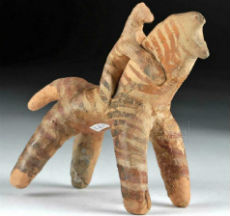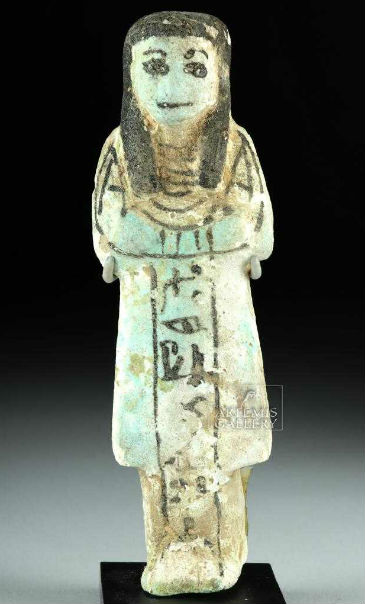
BOULDER, Colo. – Artemis Gallery will conduct a Christmas Day Charity Auction and donate 100 percent of the sales total – or a minimum donation of $25,000 – to Community Food Share. The organization’s mission is to eliminate hunger in Boulder and Broomfield Counties. This special online auction of more than 200 lots of ancient and ethnographic art will take place Tuesday, Dec. 25. Bid absentee or live online through LiveAuctioneers.
Each item boasts impeccable provenance and is offered with the gallery’s unconditional guarantee that it is authentic and legal to purchase, own, and if desired, resell.
One of the many highlights in the auction is an Egyptian faience overseer ushabti from the Third Intermediate Period, 21st to 25th Dynasty (above). The mummiform figure wears a tripartite wig while holding two picks and a seed bag across the back. The top hieroglyph, that of an ox tongue, signifies that this shabti was designated as an overseer, perhaps to monitor the other workers who tend to the sacred fields of Osiris in the afterlife. Shabti, or ushabti, dolls are figures shaped like adult male or female mummies wearing traditional ancient Egyptian headdresses. The ancient Egyptians believed that after they died, their spirits would have to work in the “Field of Reeds” owned by the god of the underworld, Osiris. This meant that all members of society, from workers to pharaohs, were required to do agricultural work. This 4¾-inch-tall figure has an estimate of $1,600-$2,400.
A Gnathian blackware pottery trefoil oinochoe is decorated in an attractive grapevine pattern along with ovolo and red and white striated and wavy bands. Gnathia ware is named for the place where it was first discovered, the Apulian site of Egnathia in southern Italy. The 6.6-inch-tall pitcher has a $500-$750 estimate.
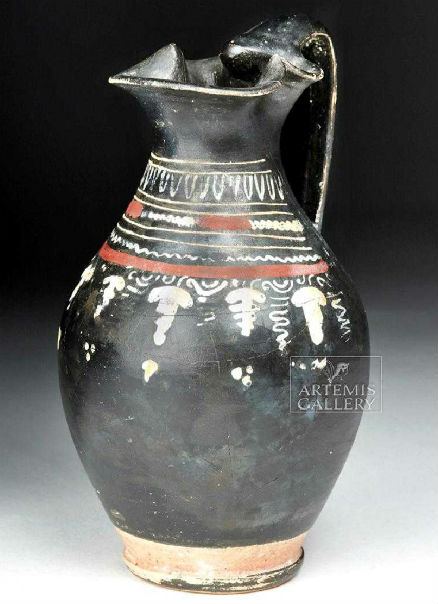
Terracotta figurines were produced throughout Greece; however, they were particularly popular in certain areas like Boeotia. A Greek Boeotian terracotta horse and rider in the auction dates to circa 575 to 550 B.C. Both the rider and the horse are decorated with red striations. Horses, whether with or without riders, were endearing subjects for Boeotian artisans, and such figurines were oftentimes left as votive burial offerings in graves. Horses were popular because they indicated wealth for the Greeks of this period. The horse and rider measure 4.75 inches long by 4.125 inches high (est. $1,800-$2,700).
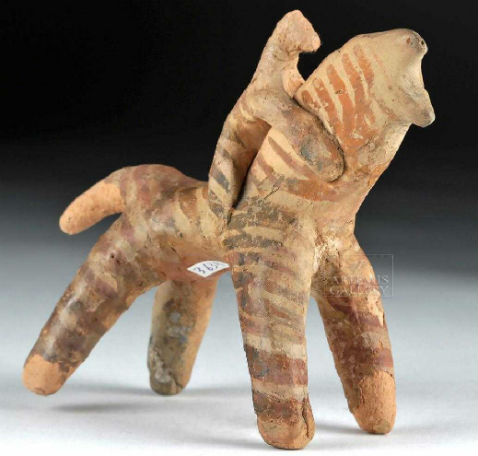
From late 19th-century China is an ornately carved white jade lidded bird effigy vessel with an integral foo dog handle carved in high relief. Looking beyond the magical iconography, the jade itself is inherently beautiful, with its milky white tone and expertly delineated finish. During the Qing Dynasty, while some decorative works declined, jade carving attained a high level of technique as exemplified by this nearly 6-inch-tall piece ($2,000-$3,000).
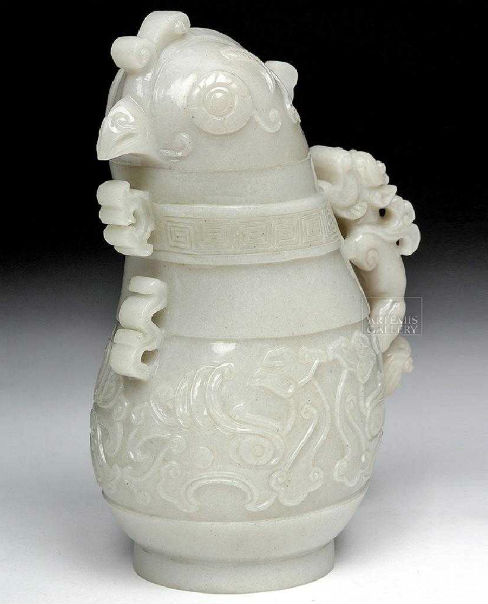
A pre-Columbian Mayan volcanic stone sculpture of an owl from the Guatemala highlands carries a $6,500-$9,750 estimate. The owl was widely symbolic in the pre-Columbian world. Owls were considered shamanic, guiding humans on their journeys from death to other worlds and the divine. This 5.75-inch-tall figure comes with authentication paperwork from Hasso von Winning, a leading expert of Mesoamerican art.
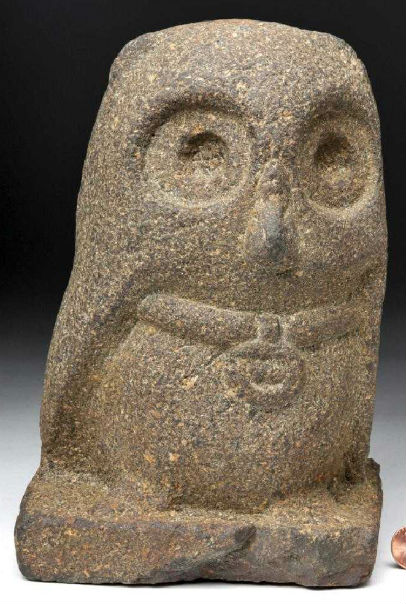
A carved wooden mask in the auction was created for festivals surrounding the cherished yam, the crucial crop of the Abelam people of northeast Papua New Guinea. The finely carved and painted balsa wood mask has a standing cockatoo carved atop the head. The advantage of using balsa wood is that it is remarkably light, making it possible to create this impressive, sculpture that was intended to decorate a yam. Masks like this example have traditionally been used to adorn the heads of huge tubers, rather than humans. It measures about 5 inches wide by 18 inches high and is expected to sell for more than $1,800.
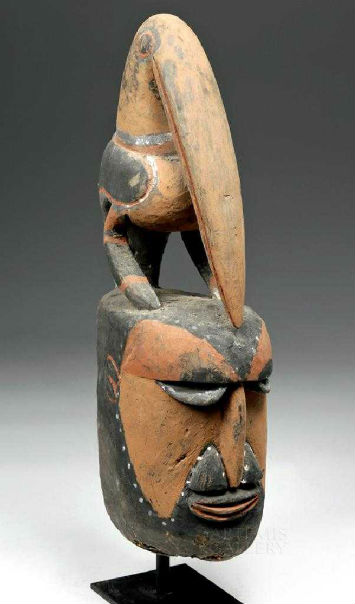
An Artemis Gallery COA will accompany each purchase. The company ships worldwide and has its own in-house packing and shipping department to ensure quality control. For additional information about any item in the auction, call Teresa Dodge at 720-890-7700 or email teresa@artemisgallery.com.
[av_button label=’View the fully illustrated catalog and bid on LiveAuctioneers.’ link=’manually,https://www.liveauctioneers.com/catalog/133068_charity-auction-ancient-ethnographic-art/’ link_target=’_blank’ size=’medium’ position=’center’ label_display=” icon_select=’no’ icon=’ue800′ font=’entypo-fontello’ color=’theme-color’ custom_bg=’#444444′ custom_font=’#ffffff’ av_uid=’av-pj99qw’ admin_preview_bg=”]


